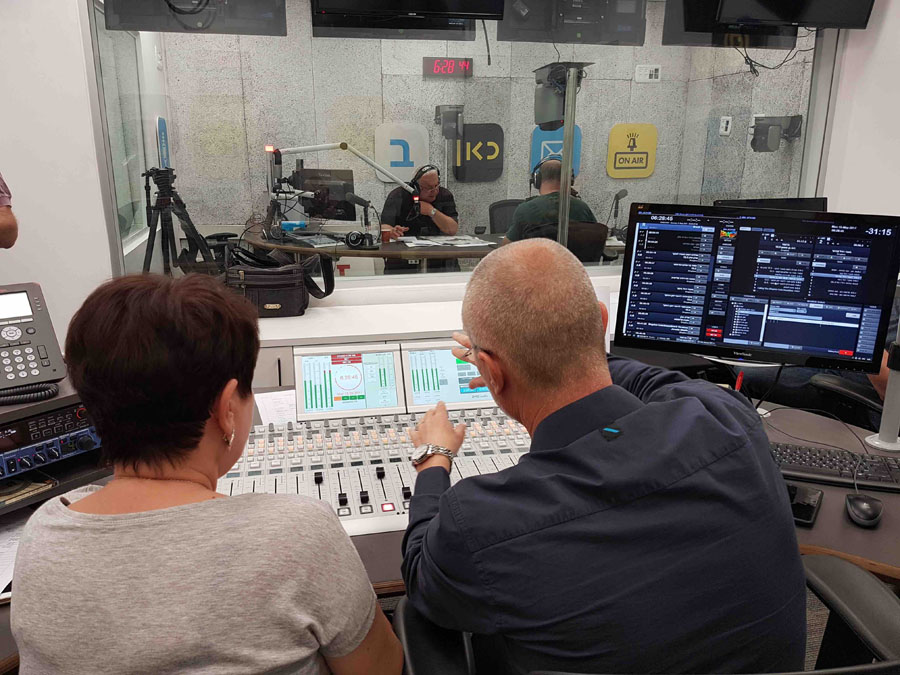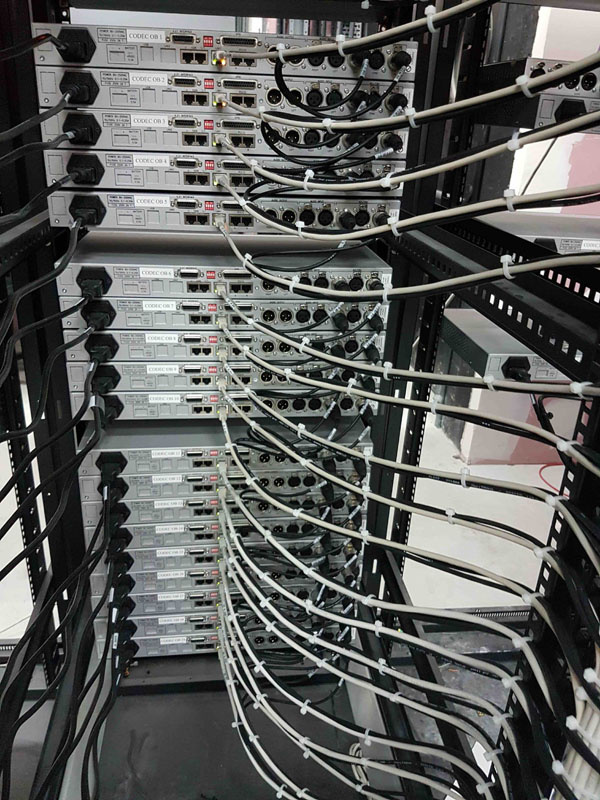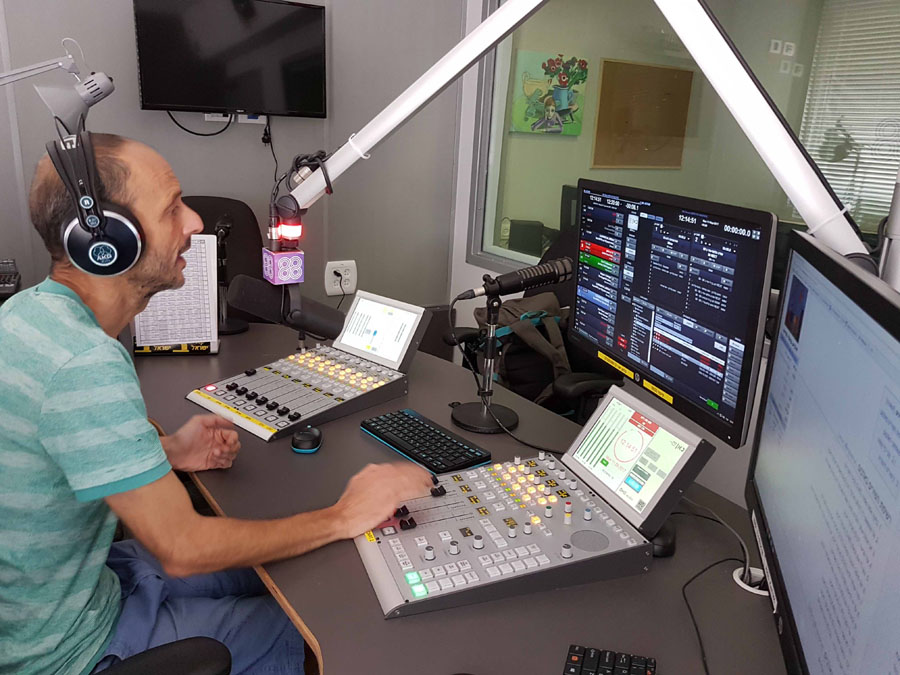The Israeli Public Broadcasting Corporation (IPBC) commenced broadcasting on May 15, 2017, to succeed the former Israeli Broadcast Authority (IBA). The creation of the new network, publicly known as KAN, inspired a new technical design to the workflow and infrastructure that was completed in the ensuing months.
A key design strategy from Israeli systems integration firm Broadcast Design LTD was to establish an IT backbone for all technical systems and operations – with a Dante Audio over IP network from Audinate supporting all low-latency, multichannel audio transport for TV and radio.
In addition to simplifying signal management and routing, enhancing audio quality and strengthening redundancy, Dante significant reduced labor and equipment costs – by upwards of $30,000.
“With more than 20 studios to build, we immediately saved about $15,000 for our customer by using a Dante Virtual Soundcard for PC-based audio distribution facility-wide versus a dedicated hardware solution,” said Micha Blum, owner and president, Broadcast Design. “We then saved about another $15,000 by using an off-the-shelf managed switch and eliminating all the cabling and connections that come with integrating a legacy system.
With Dante you connect the network cable and you’re done, so what would have taken weeks instead took days. And, the return on investment is immediate when IPBC chooses to add new audio channels to the network in the future. Dante gives you the scalability and flexibility to grow that traditional hardware does not.”
According to Blum, the project uses more than 200 Dante Virtual Soundcards, which are installed on multiple PC workstations across more than 20 studios and on multiple news, editing and production desks. The Dante Virtual Soundcards operate in conjunction with 32 off-the-shelf IT servers to support the network’s Audisi-One Automation system.
Additionally, Dante modules have been added to the facility’s DHD audio 52/RX console and associated 52/XC2 Cores for digital signal processing. Since the DHD audio has dedicated Audinate modules, operators have the flexibility to send audio from Dante Virtual Soundcards throughout the building within seconds, as well as directly to the broadcast console from any PC on the network. Operators also use the Dante network to send audio to live streaming encoders.
The 20 studios support three over-the-air TV channels from its automation system (plus separate cable/satellite feeds), eight FM stations, and seven pure internet radio feeds, with plans to grow to 40 studios as more TV and radio stations are added.
Each studio has its own Dante-enabled DHD audio 52/XC2 Core digital signal processor and localized switch to the Dante network, which enables a highly efficient way to share content while also fortifying network redundancy. The DHD audio solutions also accommodate MADI-to-Dante conversion in the TV studios.
“All of the studio PCs connect to the core managed switch, but we can disconnect and reconnect any studio for any reason,” said Blum. “We could have added one large DHD audio core in master control and routed everything over one switch, but we elected for each studio to have a dedicated Dante-enabled DHD audio module. This provides an extra layer of Audio-over-IP redundancy that only Dante provides, as every studio can act as standalone architecture.
The TV studios add Dante-enabled AVT MAGIC THipPro IP telephone hybrids. Each unit supports 16 hybrids with a hybrid output to support intercom, IFB, field reporters, and live callers over recorded hotlines. Blum adds that the Dante-enabled AVT solution added a significant cost savings to the project.
“The three AVT units provide 48 hybrids collectively, and in a legacy solution the amount of space and wiring requires to house and support those units would have been very significant,” he said. “It is a substantial return of real estate to these studios and master control.
“This is easily one of the largest Dante installations for TV and Radio broadcasting in the world from what I understand,” added Blum. “The reach of this system is tremendous, and the high capacity and flexibility it offers to scale for new audio channels is infinite, confined only by the number of studios we can build inside the facility.”
More information on :










